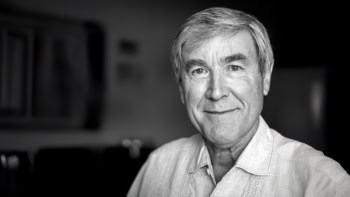
Measurements showing that a quantum system follows the forward-pointing trajectory of the arrow of time have been done by Kater Murch and colleagues at Washington University in St Louis, US. The team did this by comparing the likelihood of a controlled quantum process following forward- and backward-in-time trajectories.
In the macroscopic everyday world, systems are governed by processes that play out over the one-directional, forward-pointing arrow of time. An ice cube in a warm environment, for example, must always melt into a puddle as time progresses. Having the process run spontaneously backwards in time to have a puddle freeze-up to form an ice cube seems absurd. This is because melting involves an increase in entropy that is defined in terms of the forward-pointing arrow of time. This is an expression of the second law of thermodynamics.
On microscopic quantum scales, however, this inevitability of the arrow of time becomes less certain. While a video of a melting ice cube would look strange if it were played backward, it is less clear whether all quantum processes would look quite so strange if they were played in reverse.
Coupled qubit
Previously, physicists have been particularly uncertain as to whether measurements of quantum systems must always follow forward-pointing arrow trajectories. Murch’s team devised an experiment to resolve this issue. It involves coupling a superconductor qubit to the fundamental mode of a microwave waveguide cavity. With this setup, the researchers can determine the quantum state of the qubit by measuring the phase of the cavity’s output signal. Because of the quantum nature of the system, the measurement results in a backaction that affects the final state of the qubit.
Trajectories in time of the qubit are determined by making a time series of measurements of the qubit’s quantum state. If this measurement process were played backwards, the very result of the signal measurement would ultimately cause the qubit to return to its original state, before measurement. Unlike in macroscopic scales, this outcome is a possibility in the quantum realm, but until now, the likelihood of this happening compared with its forward-pointing counterpart has remained unclear.

What is time?
After performing many measurements on their qubit, Murch and colleagues recorded the frequencies of outcomes resulting from both forward- and backward-in-time trajectories, across several different durations of observation times; constituting varying time arrow lengths. In most cases they found that the forward trajectories were more likely than backward trajectories. However, backward trajectories were not impossible.
Through statistical analysis, the team could then define clear relationships between the relative likelihoods of forward and backward trajectories, and the duration of the trajectory (the arrow length). As arrow length increases, outcomes following forward trajectories increasingly came to dominate over those following backward-in-time paths.
These results suggest that even on quantum scales, the measurement process tends to adhere to forward-in-time trajectories. Murch’s team, therefore, show for the first time that the steady forward pointing of the arrow of time remains as fundamental a rule for quantum measurements as it is in directing entropy increases on macroscopic scales.
The research is described in Physical Review Letters.



